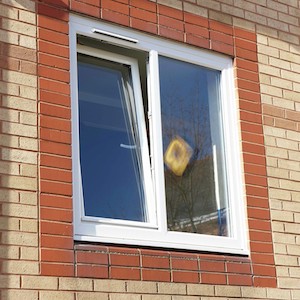A Window in the Door: More than Just a Pane of Glass
In the beginning look, a window in a door might seem like a basic architectural feature. It's just a piece of glass that permits light to filter through or provides a glimpse of what's on the opposite, right? But when you pause to think of it, this seemingly ordinary element carries substantial functional, visual, and even symbolic weight. Whether it enhances the doors of your home, office, or favorite café, a window in a door is even more than simply a pane of glass-- it's a bridge between areas.
1. Functionality: The Practical Role of Door Windows
The addition of a window to a door provides practical benefits that can boost both residential and commercial areas:
Natural Light: One of the primary functions of a window in a door is to enable sunshine to go through. In areas with minimal windows or enclosed areas like corridors or interior workplaces, this function can brighten the space, reduce the reliance on synthetic lighting, and produce a more inviting environment.
Exposure and Safety: A window in a door offers a clear view for those on either side. This is specifically crucial in industrial and industrial settings, such as dining establishments, factories, or schools, where individuals frequently move through doors. Exposure lowers the threat of accidents (e.g., someone walking into a door or colliding with somebody on the other side).
Ventilation and Energy Efficiency: When paired with operable glass or contemporary innovations like double-glazing and low-E glass, door windows can add to much better air flow and energy performance in your house or work space.
Security: While breaking glass may appear like an open invite to intruders, modern styles have addressed this problem. Reinforced glass, tempered glass, or styles with narrow panes can make the window resistant to break-in while still satisfying of visibility and light.
2. Visual Appeal: Enhancing the Visual Identity of a Space
From a design viewpoint, windows in doors can elevate visual appeal in many methods:
Style and Character: The style of the window often matches the architectural ambiance of the property. A home with a rustic or farmhouse look may feature a door with frosted or stained glass, while a smooth, modern-day home may display a minimalist door with simple, tidy lines.
Personalization: Door windows can be found in numerous shapes and sizes-- round, rectangular, oval, arched, or custom-made to match your preferences. This flexibility provides property owners and designers the capability to create doors with artistic flair and individual touches.
Suppress window in door : The entry door is frequently the centerpiece of a home's exterior, and a properly designed window within it can turn an otherwise regular door into a strong design declaration. Frosted or etched glass, for example, can convey sophistication and beauty.
3. Symbolism and Meaning: Beyond the Practical and Aesthetic
On a much deeper level, a window in a door brings symbolic meanings that resonate across cultures and contexts:
Openness and Connection: A door with a window cultivates a sense of connection in between 2 discrete spaces. Whether it's in between a house and its front backyard or a workplace conference room and a corridor, the window can make these areas feel less separated and more incorporated.
Transparency: In offices, doors with windows signify openness and accountability. A supervisor's workplace with a glass-panel door, for example, can signify approachability, reducing the hierarchical barrier that a solid closed door might produce.
A Threshold of Opportunity: Metaphorically speaking, a door with a window can represent a view into new opportunities. It offers a sneak peek into what lies ahead-- a fitting image for personal development and exploration.
4. Modern Trends: Innovations in Door Window Design
Advances in technology and style are continuously reshaping how we think about door windows. Here are a couple of patterns to see:
Smart Glass: With the advent of clever technology, windows that can alter from transparent to opaque with the touch of a button are acquiring appeal. These modern alternatives offer privacy on demand without sacrificing the benefits of natural light.
Energy Efficiency: Double- and triple-glazed door windows with advanced insulation are becoming requirement in energy-conscious homes. These not just keep your energy expenses in check however also minimize ecological effect.
Ornamental Enhancements: Patterns, etching, and colored glass inserts are ending up being more complex, offering property owners unlimited possibilities to customize their doors.
Safety Upgrades: Impact-resistant glass and shatter-proof films are progressively being integrated into door windows, particularly in locations susceptible to storms or high-security requirements.

5. Considerations for Choosing a Door with a Window
Before choosing a door with an integrated window, there are a few elements house owners and designers must keep in mind:
Personal privacy: While a window supplies visibility and natural light, it can also compromise personal privacy. Frosted glass or strategically placed window designs can reduce this issue.
Maintenance: Glass in doors will collect finger prints, dirt, and spots, especially in high-traffic locations. Choosing materials that are easy to clean or have protective finishes can save time.
Combination with the Environment: Choose a door window style that matches the surroundings. A door in a peaceful, domestic area may prioritize looks, while one in an industrial structure might emphasize resilience and security.
Conclusion: A Small Feature with Significant Impact
As easy as it might appear, a window in a door is a function that mixes practicality with beauty, safety with design, and connection with individuality. It's a tip that the tiniest details in architecture can have the power to transform not only our areas however likewise the way we interact with them.
Whether you're peering through a glass panel to welcome a guest or letting natural light filter into your home, a window in a door is far more than a style element-- it's a method to open ourselves to the world, one pane of glass at a time.
